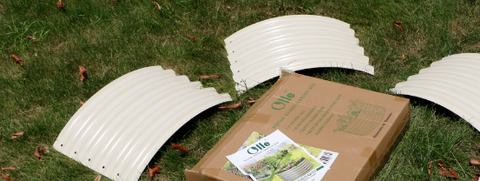12 Most Common Gardening Bed Mistakes Even a Gardening Guru Would Do
Mistakes Even a Gardening Guru Would Do on Most Common Gardening Bed! Take a note and void these!
Growing vegetables is a good thing, but people tend to screw it up. Below is a list of the Most Common Gardening Tips to Avoid for the Greatest Yield!
Most Common Gardening bed Mistakes

- Crowding Plants Together
Many vegetables perform well when planted at the proper spacing. For instance, tomatoes need good air circulation to stay healthy, so make sure to grow them at least 2-3 feet apart.
If planted too closely, vegetables can be affected by issues like blight or mildew. Apply this rule with cauliflower, eggplant, broccoli, potatoes, sweet corn, and peppers.
- Planting Too Early
If you live in an area where the temperature can fall below freezing, avoid starting tender crops like cucumber, tomato, eggplant, melon, and pepper before winters or frost.
These vegetables must stay covered until night temperatures exceed 55 F (12 C). If you have planted the veggies, make sure to cover them with a blanket or cloche to protect them from freezing temperatures.
- Over Or Under Watering
When it comes to growing vegetables, it is essential to always keep the growing medium on the moist side, but that doesn’t mean you overwater the plants.
Similarly, it is essential that you never let the soil go completely dry. So, what’s the solution? Well, using a drip irrigation system or soaker hose is a great way to eliminate the chances of dry spells.
Underwatered vegetables show signs of wilting and yellow leaves; the fruit will be deformed or stunted. In excess water, the crops will be affected and leaves will become yellow.
- Allowing Weeds to Spread
Ignoring weeds can suffocate vegetables, which will make them compete with each other for nutrients and moisture.
Mulching is a great way to eliminate their chances of sprouting. If you notice the weeds around the greens, take them out by hand. Do not use chemical herbicides.

- Keeping Plants in Dark
If you are looking forward to plenty of harvest, you have to understand the fact that vegetables need at least 4-6 hours of direct sunlight to grow well.
Keeping them in the dark or shade won’t result in good growth, the harvest will be less flavorful and have a small size.
If you don’t have a sunny landscape, try gardening in pots that can be moved around the patio according to the position of the sun.
- Not Improving the Quality and Condition of Soil
The quality of soil plays an integral role in the success of any gardening, particularly when growing food crops. Vegetables need timely feeding and if you don’t amend the soil with rotted manure, compost, beneficial organisms, and shredded leaves, the crops may suffer.
Improve the condition of the growing medium in early spring. Perform a soil test by taking a handful of it and squeezing it in your palm. If the soil makes a tight heap, it is quite wet to work. If it carries the shape but can be loosened apart, the soil is ready to use.
- Overplanting
It tempts even an experienced gardener to harvest baskets full of veggies, without thinking about the consequences they might face later.
Keep in mind that you don’t need to plant every vegetable that you find on the internet. For example, you are not required to grow 8-12 tomato plants when two or three can fulfill the need of your family.
Overplanting consumes energy and time, where you will have to spend extra hours weeding, watering, and fulfilling other gardening duties.
- Under Feeding
The vegetable plants must be fed timely and properly to produce ample harvest. Apart from improving the condition of the soil, it’s a good idea to apply some extra compost every time you sow seeds or harvest.
Use a balanced liquid fertilizer once in 4-5 weeks to boost the growth. Also, ensure not to overfeed the plants as crops like tomatoes produce more leaves than fruits if given excess nitrogen.

9.Giving No Support
Vegetables like cucumbers, tomatoes, melons, and pole beans do well when getting support or staking that helps them to keep away from touching the ground.
For example, tomatoes grow best in strong cages, whereas cucumbers, zucchini, and melons can be trained on trellis vertically. The staking keeps the crops healthy by providing air circulation and also making harvest easy.
- Ignoring the Pests
Neglecting pests is one more common mistake made by gardeners. Checking the crops at least once a week helps a lot in keeping pests away.
It just takes a few minutes to examine the leaves on both sides. Remember that most insects only affect a particular crop —if the squash is not showing any damage then that doesn’t necessarily mean that the other vegetables are safe too.
Check every vegetable that you have grown in your garden once in 5-7 days.
- Not Harvesting on Time
Though it may sound contradictory, some gardeners avoid harvesting even when veggies are ready to pick up. A plant is not going to produce more if the branches are already full of fruits.
Pick the fruits and harvest on time to ensure you get to enjoy the best taste!
- No Fencing
Planting vegetables in the garden lures herbivores like rabbits, deer, and groundhogs. They can wreak havoc in your garden, finishing the greens in no time.
Burrowing wildlife like rabbits, chipmunks, and groundhogs require an over-ground fence that’s at least 3-4 feet tall and a foot buried.
Deer need a high electric or double fence that keeps them from jumping.
